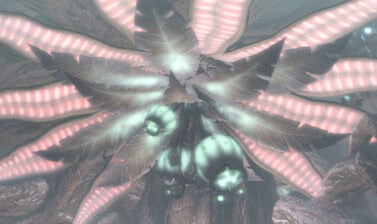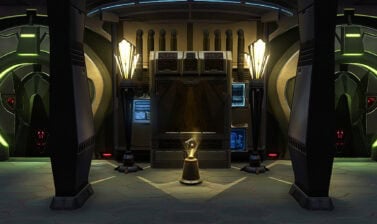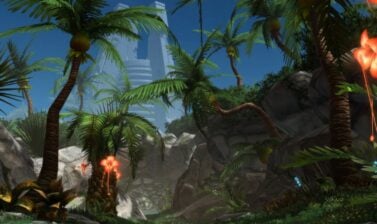Guide on all different types of damage in SWTOR, how they differ from each other and how to determine which attack does what damage!
This guide was originally a smaller segment, part of the Class Guides, but we decided to expand it and present it as a stand-alone piece!
Introduction
Damage types determine precisely how much damage is dealt by a given attack. The purpose of having different damage types is to create diversity in how attacks get mitigated.
Each specific damage type governs whether or not an attack interacts with a specific type of damage mitigation in a binary fashion. There are some exceptions to this rule, sometimes an attack can have two different components where one component of the attack does interact with a specific type of damage mitigation while the other component does not interact with that same mitigation.
For example, the Sorcerer’s/Sage’s Crushing Darkness/Mind Crush ability has an initial hit that deals direct damage and a periodic component afterward.
Each attack (or component of an attack) has four different damage types associated with it, one for each type of mitigation. Some damage types have several names that describe the same interaction with a given type of mitigation if there isn’t a single name that can encompass all attacks.
For example, one of the damage types governing interactions with defense chance is melee/ranged damage. Shooting a blaster certainly isn’t a melee attack and swinging a lightsaber certainly isn’t a ranged attack, however, both of these attacks will always interact the same way with their corresponding type of mitigation and there are only a few exceptions with defensive cooldowns, discipline passives, and utilities where these names might be treated differently, but those will always be spelled out in the tooltip description.
Melee/Ranged/Weapon vs Force/Tech
This damage type governs how an attack will interact with defense chance, which determines if an attack can be completely avoided so you don’t take any damage (dodge/parry/deflect). Defense chance can be increased by the Defense Rating stat.
Typically, defense chance is 0% for force/tech damage, so it only mitigates melee/ranged/weapon damage, though it is possible to resist force/tech damage if your class or spec has a specific discipline passive, utility, or ability that increases your defense chance against force/tech damage.
If the tooltip for a discipline passive, utility, or ability says that it increases your defense chance, normally that’s just referring to melee/ranged/weapon damage, but if it doesn’t specifically say defense chance (maybe it says something like defenses, defend, etc. instead) and doesn’t specify damage types, it will usually increase your chance to defend an attack for both melee/ranged and force/tech damage.
You can always take a look at your Character Sheet though, if you roll over where it says Defense Chance on the Defense dropdown to see a breakdown of your chance to defend an attack for each of these damage types.
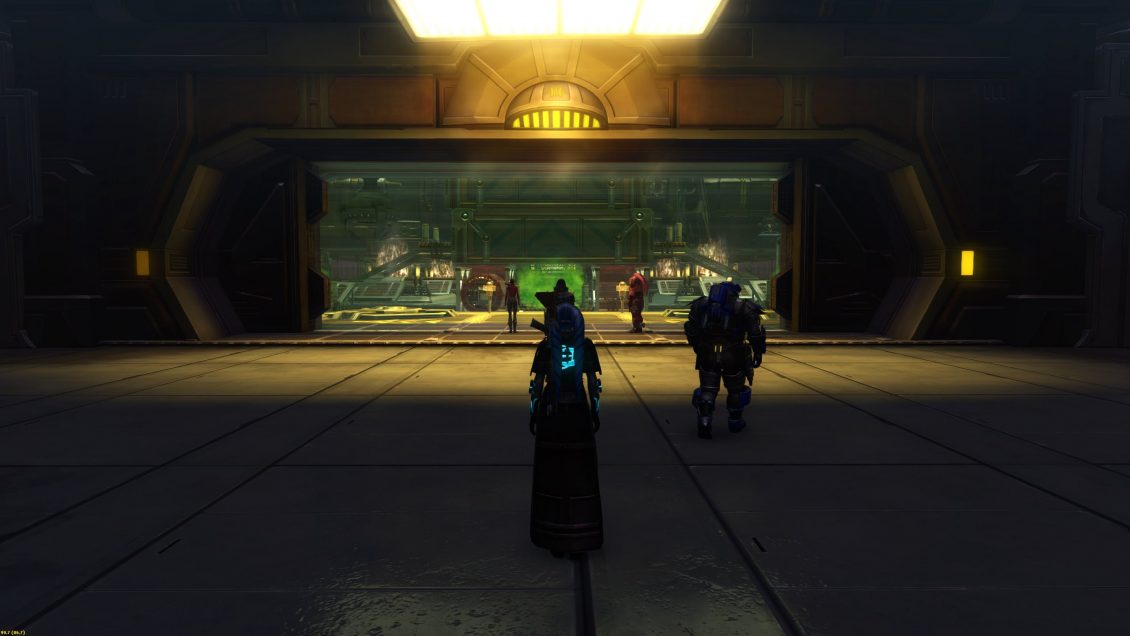
All classes have a base 5% defense chance except for Sith Inquisitors/Jedi Consulars which get 10%, this is only towards melee/ranged/weapon damage. Bosses get 10% defense chance against all damage types.
Any accuracy over 100% reduces the enemy’s defense chance by an equal amount. This is why every class needs 110% accuracy for raiding and why it can be helpful to have 105% accuracy in PvP if your spec deals a lot of melee/ranged/weapon damage.
The specific name used is determined by where the attack is coming from, it is not determined by the max range of the ability.
Ranged attacks are generally normal blaster bolts while melee attacks are generally regular lightsaber swings where the damage comes from the actual blade (and not some fancy force stuff on the blade). Please note that melee/ranged damage is always called weapon damage in the tooltip descriptions for abilities.
Force attacks are done by Sith and Jedi that are generally not coming directly from a lightsaber blade while tech attacks are generally done by non-force users that are not fired from a blaster. Sometimes blasters shoot things besides blaster bolts and that stuff is usually considered tech damage as well.
There are exceptions to all of these, for example, the Operative’s/Scoundrel’s knife/scattergun attacks are considered tech damage.
Energy/Kinetic vs Internal/Elemental
This damage type governs whether or not an attack will be mitigated by armor. Internal/elemental damage ignores armor (and tank shields) while energy/kinetic damage does get mitigated by armor. It is provided by the Armor Rating on your “right side” gear (armor is not provided by weapons, implants/ear, or relics). How much armor an individual piece of gear gives you is determined by the item rating, slot, and your armor proficiency (light, medium, or heavy).
Generally, there aren’t too many ways to change how much armor you have and there are only a handful discipline passives, utilities, and abilities that increase it; the most notable of these are the discipline passives that the tank specs have access to.
Armor is considered to be damage reduction (DR), though remember armor only works on energy/kinetic damage, so if you have any other discipline passive, utility, or ability that also provides DR, the percentage will be added to the damage reduction provided by your armor before calculating how much damage was mitigated.
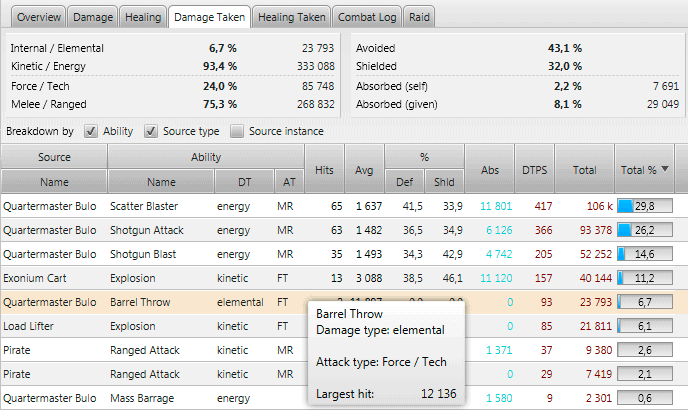
Everything in the game has armor and this information is not factored into your ability tooltips so you have to look at how much the ability did to a specific target in StarParse to get an accurate reading. Bosses don’t have internal/elemental damage reduction, so what you see in the tooltip will match what you see on the flytext for internal/elemental damage, though players sometimes do have access to internal/elemental damage reduction depending on their class.
Often, classes and specs with lighter armor have more mitigation against internal/elemental damage. Melee/Ranged/Weapon damage is always affected by armor, it’s never considered to be internal/elemental damage.
The specific name used is determined by which is more fitting for the animation. For example, fire attacks are usually elemental while poison and bleeding are usually internal. These specific names never interact differently with damage mitigation, so energy damage is always treated the same as kinetic damage and internal damage is always mitigated the same as elemental damage. This is because the same ability for each faction may have a different name and treating them differently would stop the two factions from having mirror classes. For example, Shock for the Sith Inquisitor is energy damage while the Jedi Consular equivalent Project is considered kinetic damage.
Periodic vs Direct
This damage type defines how an ability deals its damage. It’s periodic is if it’s a damage over time ability (DoT) and direct if it’s not a DoT.
Gear and stats do not provide any additional mitigation besides what you can get with the Periodic Resilience amplifier; you’ll only be able to meaningfully interact with this type of damage through discipline passives, utilities, and abilities (including cleanses).
There are a couple of exceptions to this rule for player abilities many exceptions for raid bosses where some DoTs are considered to be direct damage like Stormcaller’s Double Destruction and Nefra’s DoT, causing them to trigger on some abilities, utilities, or discipline passives that require damage to be direct, like the Sorcerer’s/Sage’s Lightning Barrier/Telekinetic Defense and the Mercenary’s/Commando’s Pyro Shield/Reactive Shield utilities.
Single Target vs AoE
Does the attack hit multiple players? If yes, then it’s an AoE. If no, it’s single target. The only ways to mitigate AoE damage is through the AoE damage reduction utility point that every spec (except tanks) has access to as well as the Aural Resistance amplifier.
Most sources of damage in raids are AoE damage, and this is why it’s imperative that every DPS and healer take that utility point on every fight and why tanks should generally take the Aural Resistance amplifier over other damage mitigation amplifiers.
Some defensive cooldowns, particularly stronger ones will also specify whether or not they require an attack to be single target or not.
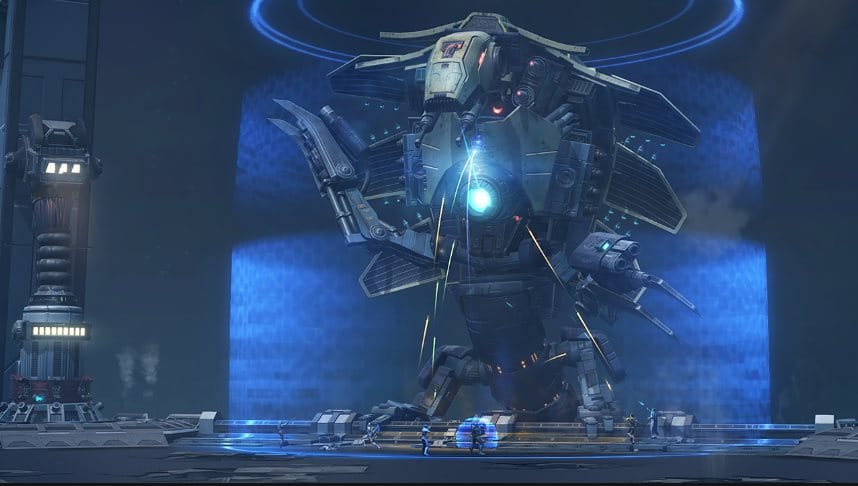
Bosses have all sorts of weird typing with their attacks, a few things that look like they should be AoE are actually considered single target attacks while a lot of attacks that seem like they’re single target might actually be AoE attacks.
For example, missiles on bosses like Apex Vanguard, Titan 6, and more obviously Corruptor Zero, actually have a small blast radius around you and are considered AoE damage, so if you’re too close to another player, you’ll both take double the damage because you’ll both get hit by each of your missiles even though each missile on its own is only aiming for an individual person, though not every AoE attack from a boss has a circle on the ground.
A note on Direct, Periodic, and AoE damage
Some people seem to think that direct damage also has something to do with requiring that the ability targets someone or that most AoE damage is considered to be not direct damage, however this is completely incorrect.
There are no abilities in the game that mitigate damage solely based on whether the ability targets or not. The only distinction made around targeting is between single target and AoE damage, but even then the distinction is based on how many targets it affects. If an ability says it only works on direct damage, all it’s doing is a simple periodic check.
Almost all player AoE abilities are considered to be direct damage, the only time an AoE ability is considered to be Periodic damage is if you place it on the ground and it keeps dealing damage without your direct involvement. Currently, Imperial Agents/Smugglers are the only class that has access to periodic AoE with things like Orbital Strike/XS Freighter Flyby and Toxic Haze/Bushwack.
I can’t say for certain where this confusion has come from, but abilities do interact with each other as described here pretty consistently. There are only a couple of situations where things don’t align with what I’ve stated here and that’s generally because of a bug with that specific ability.
Unmitigatable Damage
Damage mitigation only applies if an attack has damage types so if it is typeless like Thermite Rocket Mortar on Master & Blaster and Rage Overload on Tyth, nothing will mitigate the attack whatsoever, only bosses will do untyped damage and even then it’s pretty rare.
Untyped attacks are denoted with light blue flytext. There are also other abilities that deal 0 damage that will kill you no matter what you do because they are designed to be one-shot mechanics.
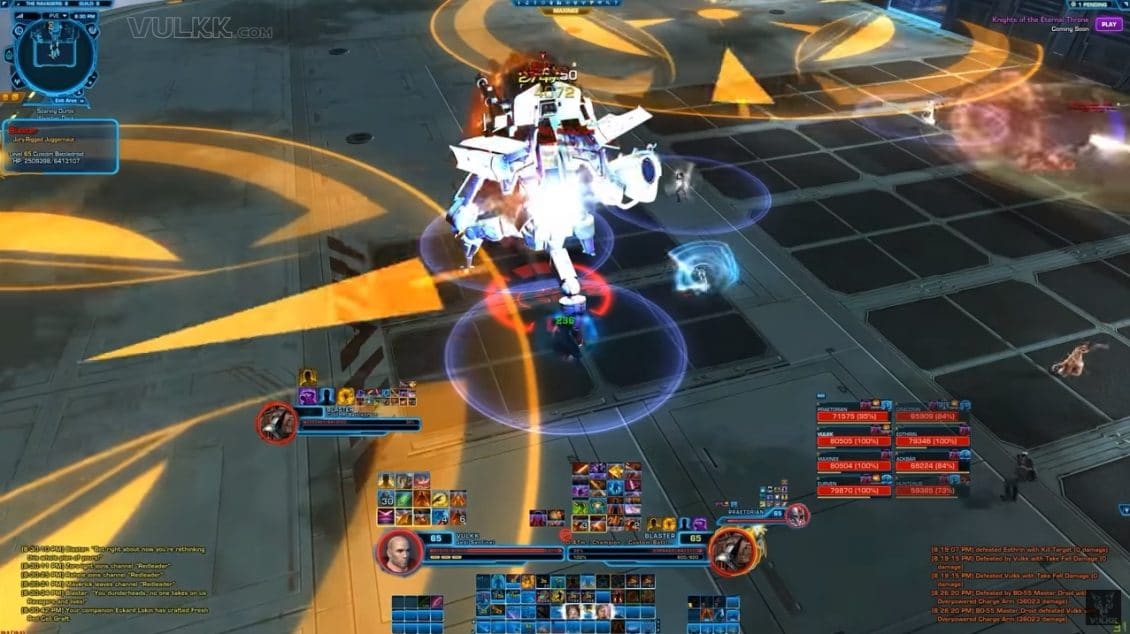
I hope you find this useful. As always, if you have any questions, leave a comment below.

